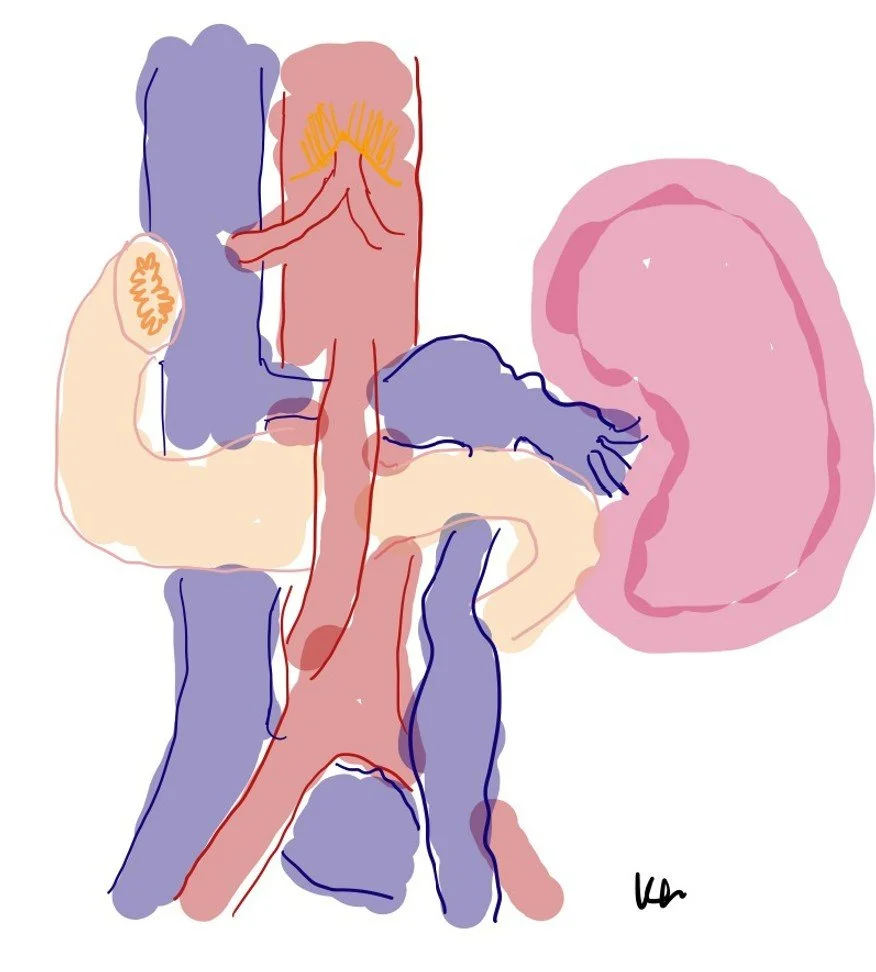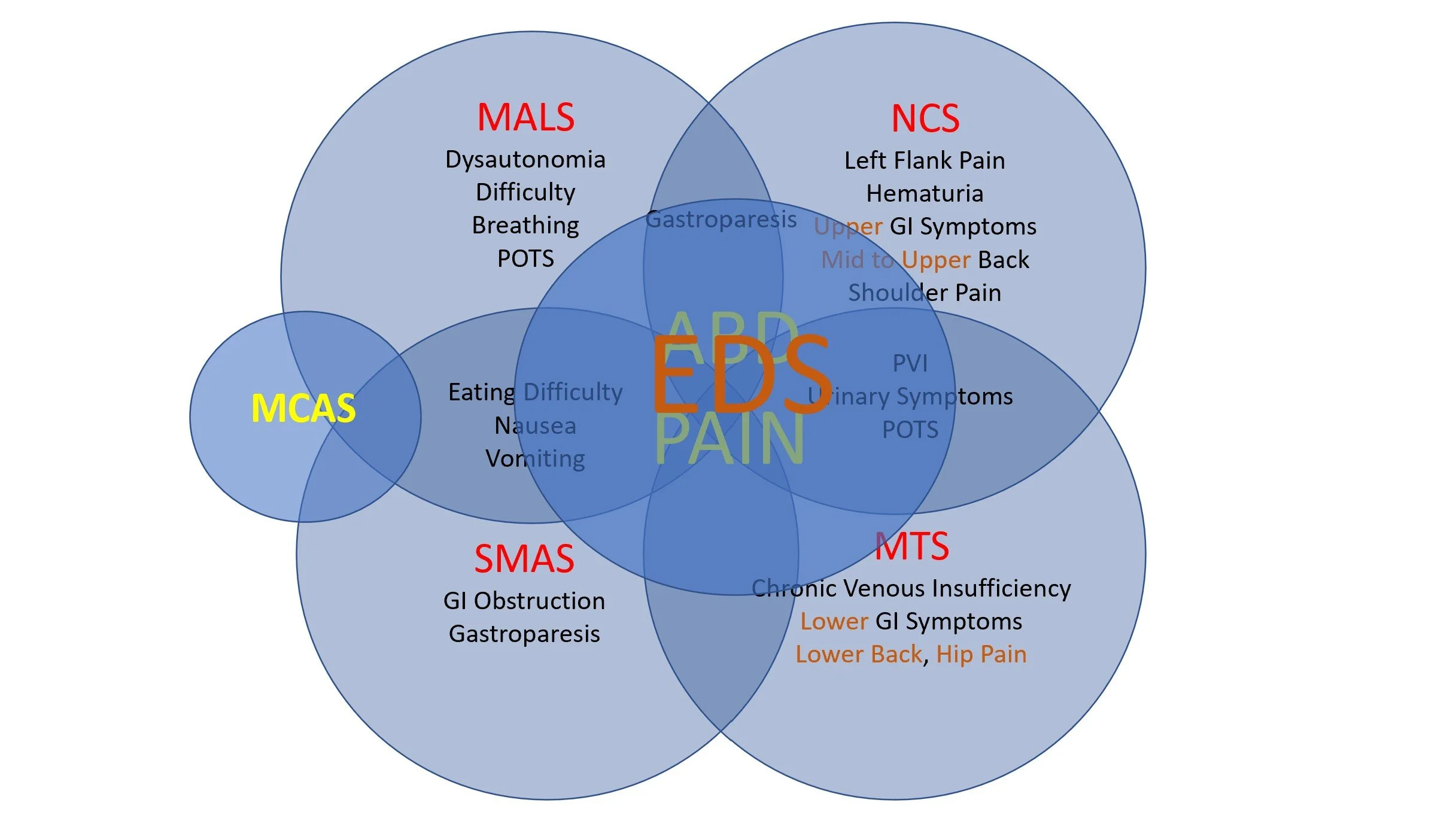What is Abdominal Vascular Compression Syndromes?
AVCS
AVCS is a collection of vascular compression syndromes that occur in the abdomen and pelvis. There are four known vascular compression syndromes in the abdomen and pelvis at this time.
Median Arcuate Ligament Syndrome (MALS)
Superior Mesenteric Artery Syndrome (SMAS)
Nutcracker Syndrome (NCS)
May-Thurner Syndrome (MTS)
Two of these syndromes, NCS and MTS, contribute to Pelvic Congestion Syndrome - PCS - also known as Pelvic Venous Insufficiency in addition to primary failure of ovarian and internal iliac veins on both sides.
The reason why the acronym AVCS was coined are three folds:
1. Each of these syndromes typically occurs independently in the general population. However, some patients present with combinations of these syndromes, and it is not uncommon to see individuals with in my three or more syndromes involved in a patient in my experience, particularly for those with a spectrum of Ehlers-Danlos Syndrome (EDS). A collective evidence show that Ehlers Danlos Syndrome is the overwhelming common denominator when patients present with three or more vascular compression syndromes mentioned above.
2. The anatomic proximity of the involved vascular compression syndromes and their shared symptoms is unmissable. The shared arterial, venous, nervous, and lymphatic system and communications or feedback they exchange - natural or pathologic - likely have significant importance in understanding of the collective syndromes.
3. There appears to be an interconnectivity among the syndromes that comprise Abdominal Vascular Compression Syndromes, where one syndrome can affect another, particularly after a significant illness or surgery. In such cases, the symptoms of one compression syndrome may worsen the symptoms of another. Additionally, certain combinations of syndromes, such as Nutcracker and Superior Mesenteric Artery Syndromes, occur more frequently due to their shared narrowed aortomesenteric angle. There are overlapping symptoms among all four syndromes, with some exhibiting more overlap than others - see diagram above.
Because of this interconnectivity and overlapping symptoms, it has become critical that for some patients assessment for all four compression syndromes become fundamental in formulating overall diagnosis and treatment plans for these patients. In particular for EDS patients, it is often observed that they receive a piecemeal diagnosis and surgeries to poor outcome when there is several other compression syndrome actively causing problems. This makes it very difficult for the patients to endure what seems to be never ending journey with setbacks and surgeries that does not seem to improve their condition due to coexisting compression syndromes. Planning surgery with consideration of other compression syndrome becomes an important decision making process. Also, priority of which syndrome to address can affect patient outcomes significantly based on presenting symptoms with professional guidance on the expectation of outcome.
It's also important to know other disease entities that share symptoms that seem very similar or resemble AVCS. The two syndromes that fit this description are Ehlers Danlos and Mast Cell Activation Syndromes.
Both EDS and MCAS are systemic diseases that affect all parts of our body. Having diagnosis of EDS and/or MCAS alone can cause many symptoms similar to AVCS. The difference is that for AVCS, there’s specific anatomic abnormalities that can be seen on imaging except for the neurogenic version of MALS. As venous or arterial compression seen on images do not always produce the symptoms - permissive compression, it becomes important to understand the typical and atypical presenting symptoms of each of these vascular compression syndromes, as well as having relevant knowledge of EDS and MCAS symptoms in relation to the AVCS as well.
Copyright K. Kim 2022

